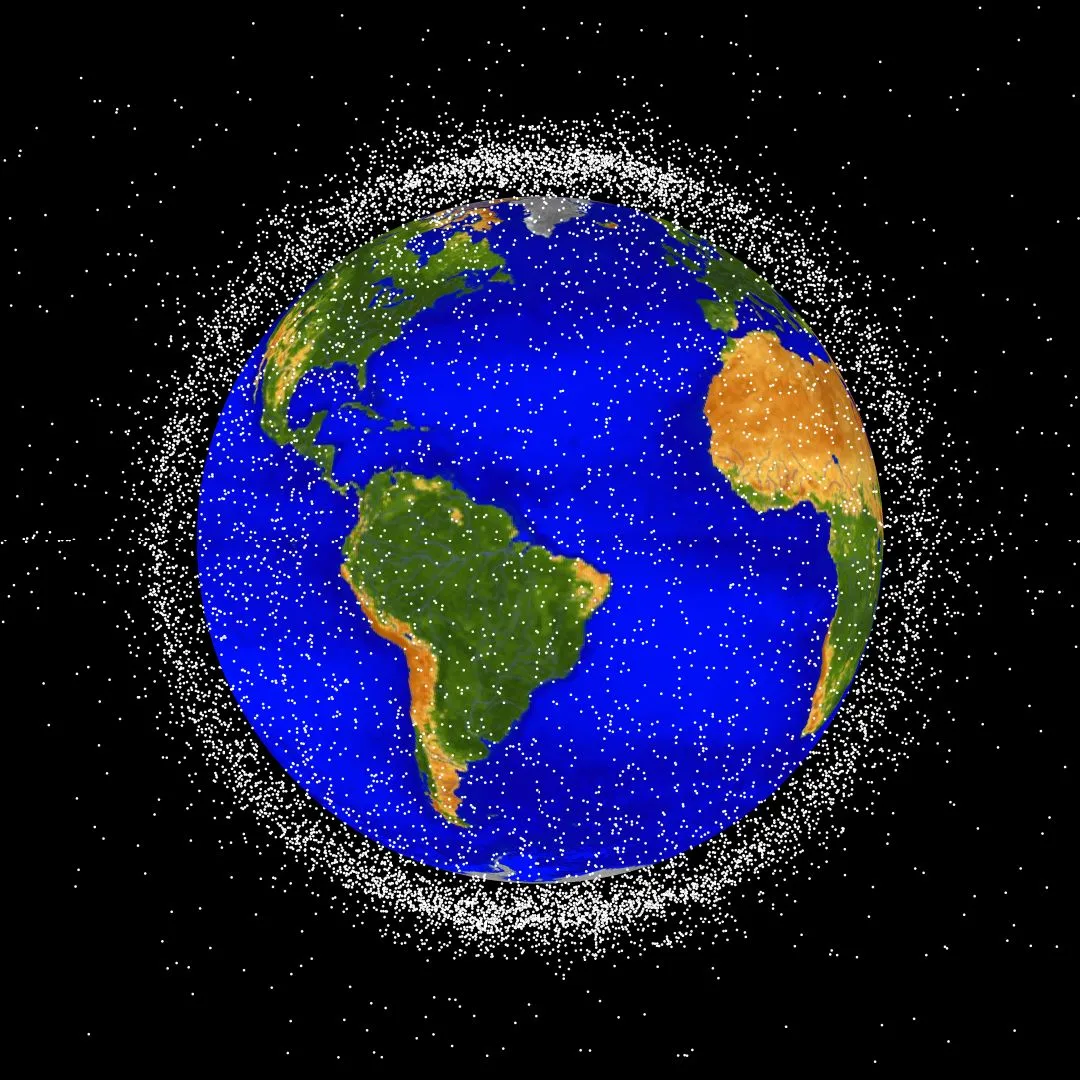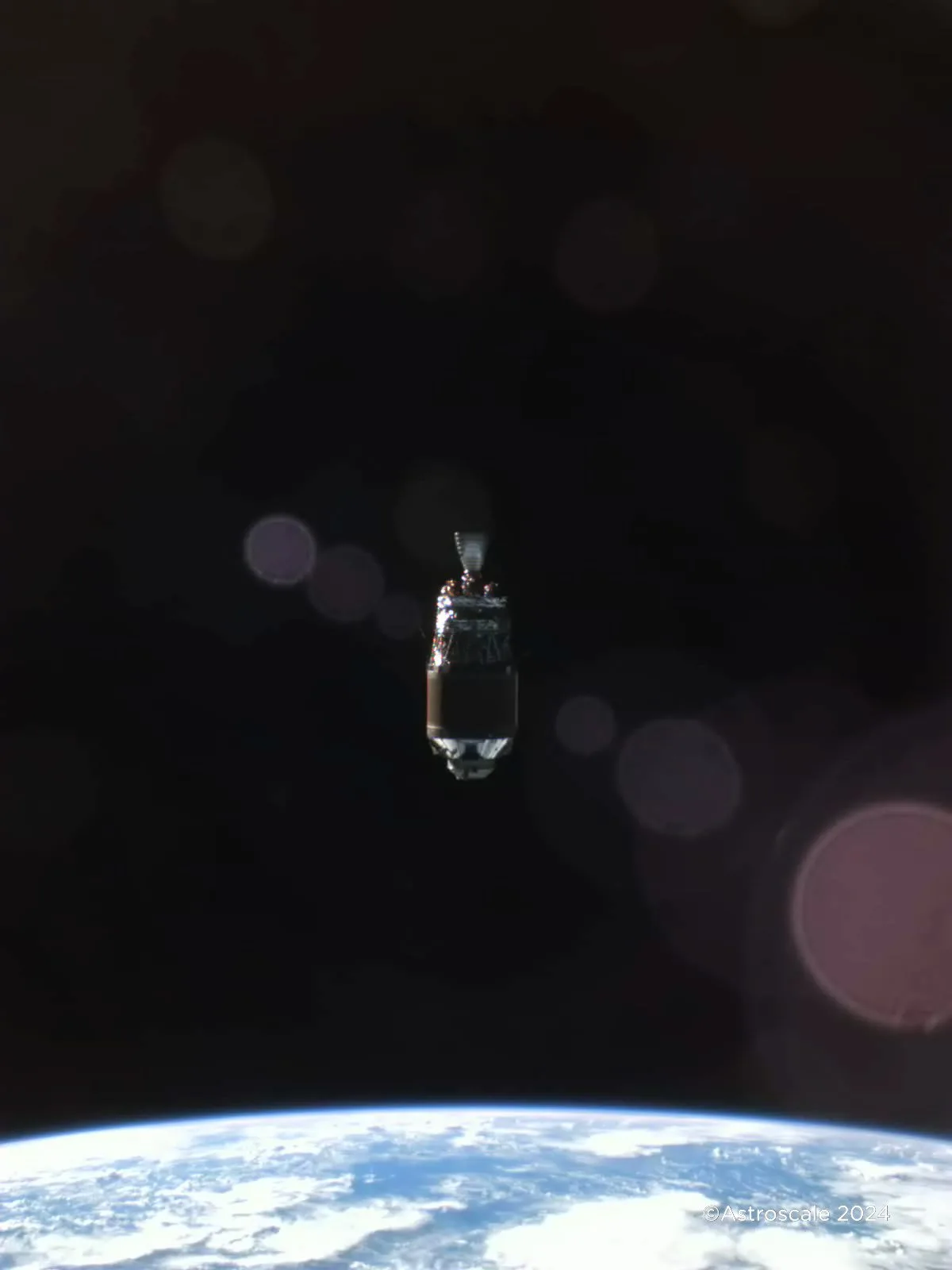The Soviet Union launched Sputnik I — an eighty-four kilogram (184 pounds) beach ball-sized satellite into the Low Earth Orbit (LEO) on October 4, 1957. It orbited the globe for three months, circling it every 96 minutes while transmitting a beeping noise that could be heard by radio listeners across the world. It fell out of orbit just three months later, having completed a total of 1,440 orbits before burning up during re-entry into the atmosphere.
The smallish satellite carried just a thermometer and two radio transmitters, not achieving much in the domain of space exploration. But its deployment had heavy political significance, initiating a chained reaction: A year after Sputnik’s launch, U.S. President Dwight Eisenhower created the National Aeronautics and Space Administration (NASA), formally initiating the space race.
Global space programs have since launched several satellites, probes, landers, crewed spacecrafts, and put a rugby pitch-sized space station in orbit. Thousands of objects have been put into space, most of them in the last decade, with
the vast majority of these launches being commercial satellites launched by Elon Musk’s SpaceX.
Gone are the days when the government was responsible for launching probes and manned spacecrafts. Over the last decade, space has become the starry playground for billionaires.
SpaceX began launching huge numbers of its Starlink internet broadband satellites in 2019; it has already put 6,000 in orbit of the over 40,000 planned. Half of all launches worldwide in 2023 were SpaceX rockets, a trend likely to stick around over the decade.
These satellite “mega-constellations” will only continue to grow: Amazon’s Jeff Bezos plans more than 3,200 for his Project Kuiper; OneWeb — owned by a consortium including the U.K. government and the Indian conglomerate Bharti Enterprises — has already put over 600 in orbit of the nearly 7,000 planned; and China has expressed its intentions of creating a 26,000-satellite constellation. With others in tow, there could be anywhere from 27,000 to over 100,000 commercial spacecraft in orbit by 2030. The potential payoff is huge, but so are the drawbacks.

These bright, easily visible satellites are filling up the sky and telescope data — an existential threat for astronomers, predicted to obstruct almost any campaign to observe the universe in visible light. Moreover, these spacecraft release aluminum oxide into the upper atmosphere, which a potent and lasting catalyst for chemical reactions that result in ozone depletion. By current trends, concentrations of ozone-damaging aluminum oxides in the atmosphere could increase by 650 percent within the next 30 years.
This increased occupancy of space serves as a threat to space exploration itself, since mankind leaves trash behind wherever it goes. Non-operational satellites, stages from rockets, and other
large-scale debris has accumulated in space for decades to create a celestial junkyard.
Despite costing billions, these spacecrafts were launched with the understanding that abandonment was cheaper than retrieval or sustenance. Most objects, scientists predict, will stay in orbit for decades or centuries — burning up in the atmosphere upon re-entry.
This orbital debris has proliferated over decades, coming from frequent breakup of expended rocket bodies, explosion of satellites, dead satellites, collisions, and even rogue screws and paint flecks.
Collectively, it has resulted in nearly 8,000 metric tons of dead, human-deposited objects in orbit; more than 13,000 defunct satellites; and over 100 million pieces of debris in orbit larger than 1 millimeter in diameter, the vast majority too small to track. Of the 56,000 pieces of debris that we can track, there are more than 27,000 objects being monitored by the Department of Defense’s global Space Surveillance Network.
But there lies a threat beyond the immediate congestion of the Low Earth Orbit: The risk of Kessler Syndrome. A chained reaction first explored by NASA scientist Don Kessler in 1978, it predicts debris self-propagation due to collisions — generating a belt of orbital junk, rendering the orbit “uninhabitable.”
In 2009, nearly 500 miles of Siberia, a Russian and U.S. satellite collided — bursting into a corona of debris. Their catastrophic end was the first known time that two satellites collided in space, a startling reminder of the growing orbital junk problem. Other clusters of rocket bodies or other spacecrafts in certain “bad neighborhoods” in the orbit could create on the order of 15,000 to 20,000 trackable fragments, a space-debris expert told the Atlantic.
The problem has been further propagated by anti-satellite tests (ASAT) conducted by Russia, the U.S., China, and India. When Russia shot down one of its Soviet-era satellites, it sent more than 1,500 pieces of trackable debris into space, forcing astronauts in the ISS to shelter for about two hours in escape spacecrafts in the event of an imminent collision.
Moving at around 27,000 kilometers per hour (17,000 mph) in the LOE, the impact of a one-centimeter bolt can have the explosive force of a hand grenade upon impact, the New Yorker noted. The European Space Agency notes that “a 10-cm object would cause the catastrophic fragmentation of a typical satellite, a 1-cm object will most likely disable a spacecraft and penetrate the ISS shields, and a 1-mm object could destroy subsystems on a satellite.”
Spacecrafts regularly delay launches or perform maneuvers to avoid space junk. In orbit since 1998, the ISS has performed at least 32 debris-avoiding maneuvers. But not all rubble shows up on radars. In 2021, debris of unknown origin created a five-millimeter hole in the International Space Station’s robotic arm. And this
orbital debris isn’t hazardous just to astronauts or unmanned spacecrafts, but us land-dwellers as well.
While considered small, the risk of uncontrolled arrival of artificial space debris is still significant. A study from 2022 used mathematical modeling and 30 years’ worth of data to estimate where rocket debris and other pieces of space junk would land when they fall back to Earth.
The researchers found that regions around southern latitudes — the likes of Jakarta in Indonesia, Dhaka in Bangladesh, or Lagos in Nigeria — were three times more likely to experience such an event compared to regions like New York or Beijing. They also predicted a 10 percent chance of one or more casualties over the next decade, on average, which would make for a rather unique eulogy.
Such events have already been recorded: Rogue fragments have been discovered in Australia and Canada. art of a battery pack released from the International Space Station even struck a home in Florida earlier this year.
With greater occupancy of space and more frequent launches and re-entries, such events can only become more common. If outer space is to remain a viable environment for development, the space junk problem needs a fix.
Research-backed by space agencies has shown that at least five to ten of the most massive debris objects must be removed each year to prevent uncontrollable space debris accumulation.
But natural space clean-up — atmospheric drag, to be specific — is incapable of effectively removing large-scale debris. In fact, orbital decay could compound problems posed by massive debris as surface erosion may cause breakdown into smaller debris. As such,
cleanup and removal of massive debris objects must be done manually.
According to a comprehensive financial analysis of space debris by NASA, the best strategy involves the removal of smaller objects while larger debris is nudged off. Its cost-benefit analysis demonstrates that while the removal of the top 50 most concerning objects in low Earth orbit would be expensive, it would be worthwhile in the long run.
Current attempts at minimizing debris formation and crash prevention revolve around re-entry burn-up exercises for spent spacecraft and debris avoidance maneuvers, the latter costing up to $1 million per maneuver.
But more effective cleaning of space requires designing and implementing active debris removal (ADR) projects — involving vehicles equipped with robotic arms, nets, harpoons, or other tools. These efforts also need to be better supported by companies that perform ground-based tracking of space debris.
Right now, scientists detect space debris by looking for objects that reflect light or radar signals. The smaller these objects get, the harder it becomes to get signals strong enough to detect them from the ground. As a result, less than 1 percent of the orbital debris remains trackable.
While scientists are preparing better tracking techniques, such as the detection of electrical signals emitted by colliding pieces of space debris, the orbital junk-retrieval industry still remains quite nascent. It is a time when the space community is trying to reinvent the wheel – redesigning spacecraft, experimenting with new materials and fuels, and reusing and recycling satellites rather than deploying so many single-use ones.
